iliopsoas tendonitis exercises pdf
Iliopsoas tendonitis involves inflammation of the iliopsoas tendon, affecting hip flexors. It often results from overuse or repetitive hip flexion. Exercise plays a key role in managing symptoms, improving mobility, and promoting recovery. A structured exercise program, including stretching and strengthening routines, can help alleviate pain and restore function. Downloadable PDF guides provide comprehensive exercise plans tailored for different phases of rehabilitation.
1.1 Definition and Overview
Iliopsoas tendonitis is inflammation of the iliopsoas tendon, a critical hip flexor structure combining the iliacus, psoas major, and psoas minor muscles. It facilitates hip flexion and stabilizes the lumbar spine. This condition often arises from repetitive motion, overuse, or muscle imbalances. Symptoms include hip pain, limited mobility, and discomfort during activities like walking or climbing stairs. Accurate diagnosis and targeted exercises are essential for effective management. Early intervention can prevent chronic issues and restore normal function.
1.2 Importance of Exercise in Rehabilitation
Exercise is crucial in managing iliopsoas tendonitis, as it strengthens muscles, improves flexibility, and restores proper hip function; A structured program incorporating stretching and strengthening exercises helps alleviate pain and inflammation. Early intervention with gentle movements prevents chronic stiffness and promotes recovery. Consistency in performing exercises, such as hip flexor stretches and core stabilizations, enhances muscle balance and reduces the risk of re-injury. Professional guidance ensures a tailored approach, addressing individual needs and progression through rehabilitation phases effectively.
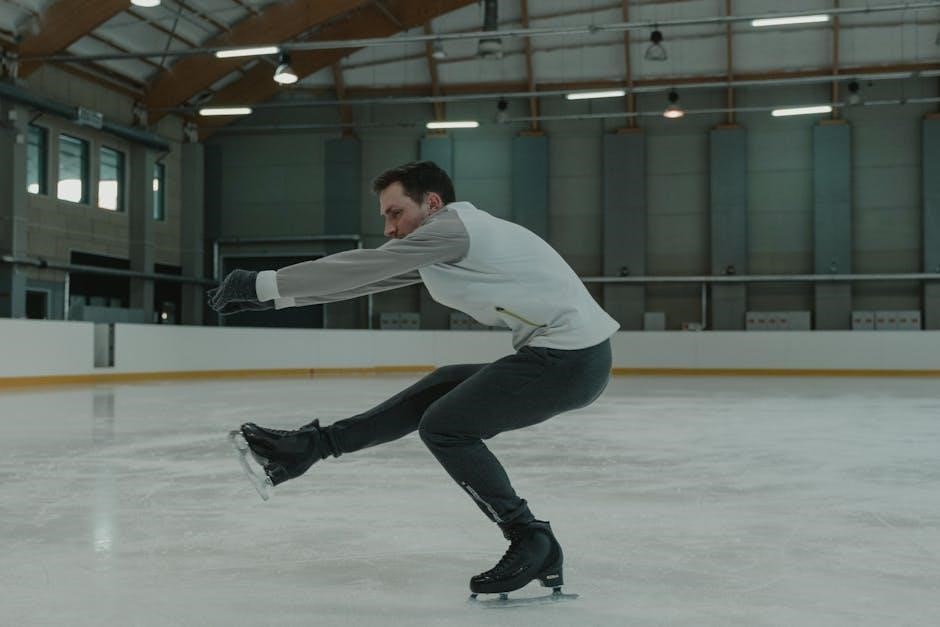
Causes and Symptoms of Iliopsoas Tendonitis
Iliopsoas tendonitis often results from overuse or repetitive hip flexion, leading to inflammation. Symptoms include hip pain, swelling, and limited mobility, impacting daily activities and movement.
2.1 Common Causes of Iliopsoas Tendonitis
Iliopsoas tendonitis is often caused by overuse or repetitive stress on the hip flexors, commonly seen in runners, cyclists, and individuals with active lifestyles. Prolonged sitting, weak core muscles, or poor posture can contribute to strain. Traumatic injuries, sudden bursts of activity, or muscle imbalances may also trigger inflammation. Identifying these causes is crucial for developing targeted exercises and prevention strategies to address the condition effectively.
2.2 Key Symptoms to Watch For
Symptoms of iliopsoas tendonitis include pain in the groin, anterior hip, or lower abdomen. Tenderness near the hip joint and limited mobility are common. Pain may worsen with activities like walking, running, or climbing stairs. Some individuals experience a snapping sensation in the hip. Rest or sitting can alleviate discomfort, while standing or stretching may exacerbate it. Early recognition of these symptoms is essential for prompt intervention and effective management of the condition.
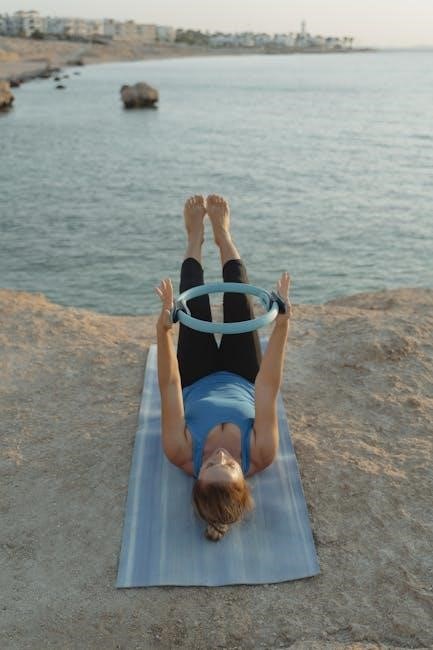
Diagnosis and Assessment
Diagnosis involves clinical evaluation, MRI scans, and physical exams to assess tendon inflammation and rule out other hip conditions. Accurate assessment is crucial for targeted treatment plans.
3.1 Medical Evaluation and Tests
A thorough medical evaluation for iliopsoas tendonitis includes a physical exam to assess hip mobility and tenderness. Imaging tests like MRI or ultrasound are used to confirm tendon inflammation. These tests help differentiate iliopsoas tendonitis from other hip conditions, ensuring an accurate diagnosis. A proper assessment is essential for developing an effective treatment plan tailored to the patient’s needs.
3.2 Role of Imaging in Diagnosis
Imaging plays a crucial role in diagnosing iliopsoas tendonitis, providing detailed visuals of the tendon and surrounding structures. MRI is the gold standard, offering clear images of inflammation and tendon integrity. Ultrasound is also effective, allowing real-time assessment of tendon thickness and fluid accumulation. These imaging modalities help confirm the diagnosis, rule out other hip pathologies, and guide treatment decisions, ensuring an accurate and effective approach to managing the condition.

Treatment Options for Iliopsoas Tendonitis
Treatment focuses on reducing inflammation and restoring function. Options include physical therapy, anti-inflammatory medications, and activity modification. Surgery is rarely needed but may be considered for severe cases.
4.1 Conservative Management Strategies
Conservative management focuses on reducing pain and inflammation while restoring function. This includes physical therapy with exercises like leg presses, mini-squats, and step-ups. Eccentric exercises are beneficial. A structured stretching routine, such as hip flexor and hamstring stretches, is essential, performed 2-3 times daily. Activity modification to avoid aggravating movements and the use of anti-inflammatory measures are also recommended. These strategies aim to promote healing and improve mobility without surgical intervention.
4.2 Surgical Interventions (When Necessary)
Surgery is typically considered a last resort for iliopsoas tendonitis when conservative treatments fail. Procedures may include tendon debridement or tendon release to relieve tension. Surgical intervention is rare but may be necessary for chronic cases or tendon ruptures. Post-surgery, a structured rehabilitation program is essential to restore strength and mobility. Recovery time varies, with full return to activity often taking several months. Surgery should only be pursued under professional medical guidance to ensure optimal outcomes and minimize complications.
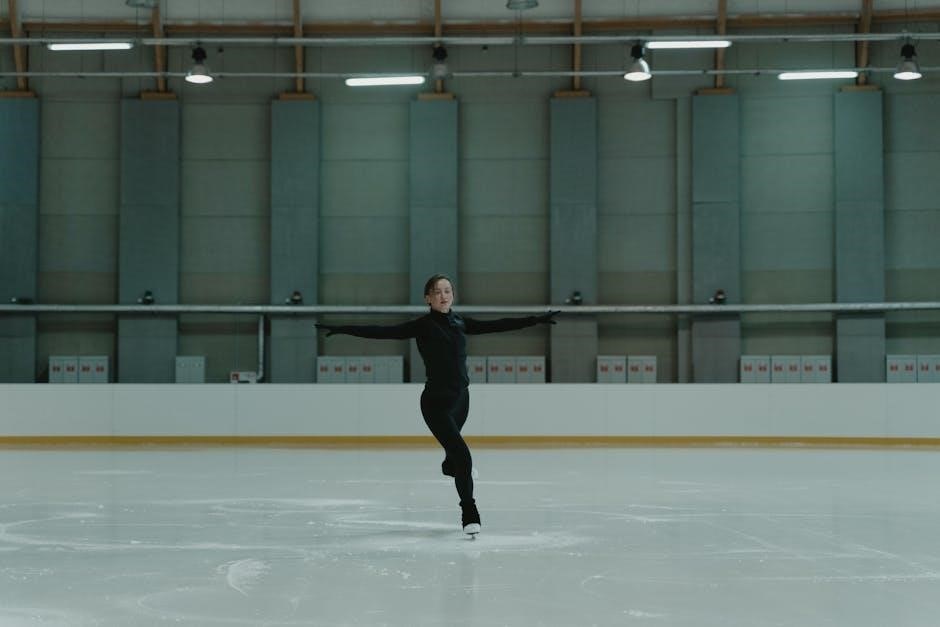
Exercise Programs for Iliopsoas Tendonitis
Exercise programs for iliopsoas tendonitis focus on gentle stretching, strengthening, and progressive mobility. These routines aim to reduce pain, improve flexibility, and restore proper hip function.
5.1 Gentle Stretching Exercises
Gentle stretching exercises are foundational in managing iliopsoas tendonitis. Begin with a hip flexor stretch by kneeling on the affected leg, leaning forward slightly, and holding for 30 seconds. The lunge stretch, performed carefully to avoid discomfort, targets the iliopsoas muscle. Hamstring stretches, such as seated or standing stretches, reduce tightness that contributes to hip flexor strain. Stretching routines should be performed 2-3 times daily, with each hold lasting 20-30 seconds. Consistency is key to improving flexibility and relieving tension in the hip muscles.
5.2 Strengthening Exercises
Strengthening exercises are crucial for rebuilding iliopsoas tendon resilience. Start with mini-squats and step-ups using light weights and high repetitions to enhance muscle endurance. Leg presses and hamstring curls target the surrounding muscles, improving overall hip stability. Superman exercises on a physioball strengthen the lower back and glutes, indirectly supporting the hip flexors. These exercises should be performed smoothly, avoiding explosive movements. Aim for 3 sets of 10-15 repetitions, progressing gradually to ensure proper healing and functional recovery without overloading the tendon.
5.3 Advanced Exercise Phase
The advanced phase focuses on restoring full functional movement and strength. Incorporate dynamic exercises like single-leg balances and lateral bounds to enhance stability. Progress to sport-specific drills, such as agility ladder work and shuttle runs, to mimic real-world movements. Core strengthening and proprioception exercises, like wobble board training, are essential for improving balance. Gradually introduce low-impact plyometrics to rebuild power without overloading the tendon. This phase prepares the individual for return to full activity by bridging the gap between rehabilitation and performance.
5.4 Progression of Exercises
Exercise progression involves transitioning from basic to more dynamic movements, ensuring the iliopsoas tendon can handle increased demands. Gradually introduce resistance, such as light weights or resistance bands, while maintaining proper form; Incorporate balance and agility drills, like single-leg stands or cone drills, to enhance functional stability. Avoid explosive movements initially, focusing on controlled, slow repetitions. As strength and flexibility improve, introduce sport-specific movements tailored to the individual’s activity level. Progression should be pain-free and guided by clinical improvements, typically spanning weeks 7-8 of the rehabilitation program.

Phase I: Initial Rehabilitation (Weeks 1-3)
Focus on pain relief and basic mobility. Gentle stretching and modified exercises like mini-squats are recommended. Perform exercises 2 times daily to improve range of motion and reduce stiffness.
6.1 Focus on Pain Relief and Basic Mobility
During Phase I, prioritize pain relief and restoring basic mobility. Gentle stretching exercises, such as the hip flexor stretch and lunge stretch, are essential to reduce tightness. Mini-squats and quarter wall squats can help improve hip movement without exacerbating pain. Perform these exercises smoothly and avoid explosive movements. Incorporate activities like water walking for low-impact mobility; Stretching routines should be done 2-3 times daily, with each stretch held for 20-30 seconds. These initial steps lay the foundation for more advanced rehabilitation in later phases.
6.2 Recommended Exercises for Phase I
Phase I focuses on gentle exercises to alleviate pain and improve mobility. Mini-squats and quarter wall squats are ideal for strengthening without strain. Water walking and pool exercises promote low-impact movement. Gentle stretching, such as the hip flexor stretch and lunge stretch, should be performed 2-3 times daily. Each stretch should be held for 20-30 seconds, with 3 repetitions. Avoid explosive movements and focus on smooth, controlled actions. These exercises help restore basic hip function and prepare the tendon for more intense rehabilitation in later phases.
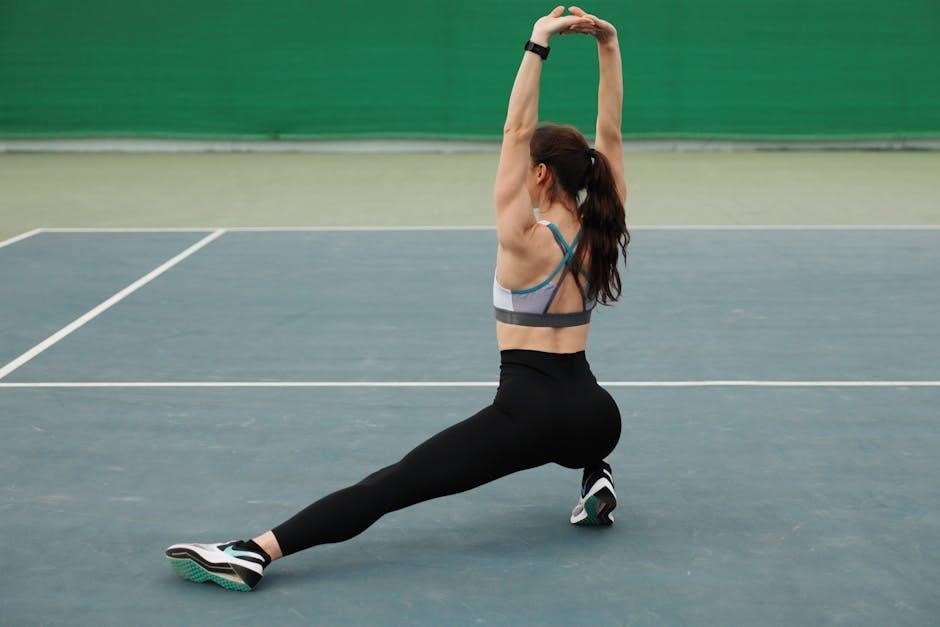
Phase II: Strengthening and Flexibility (Weeks 4-6)
Phase II introduces core strengthening, dynamic stretching, and gradual progression of exercises. Focus on controlled movements, avoiding strain, to enhance hip flexibility and muscle endurance.
7.1 Core Strengthening Exercises
Core strengthening exercises are essential during Phase II to enhance pelvic and hip stability. Focus on controlled movements like mini-squats, step-ups, and Superman exercises on a physioball. These exercises target the deep core muscles, improving posture and reducing strain on the iliopsoas tendon. Start with light resistance and progress gradually, ensuring proper form to avoid injury. Dynamic stretching techniques, such as leg swings and hip rotations, are also incorporated to improve flexibility and range of motion. Avoid explosive movements and emphasize slow, controlled repetitions for optimal benefits.
7.2 Dynamic Stretching Techniques
Dynamic stretching techniques are crucial for improving hip flexibility and reducing tightness in the iliopsoas tendon. Incorporate exercises like high knees, leg swings, and lunge walks to enhance range of motion. These movements should be performed smoothly and controlled, avoiding bouncy or forceful actions. Focus on gradual progression, increasing intensity as mobility improves. Dynamic stretches prepare the hip flexors for more vigorous activities, preventing stiffness and promoting balanced muscle function. Regular practice ensures sustained flexibility and supports the overall rehabilitation process.
Phase III: Advanced Exercise Phase (Weeks 7-8)
Phase III focuses on restoring pain-free range of motion and advancing muscle strength. Dynamic balance drills and sport-specific agility exercises prepare for full activity return, ensuring functional movement.
8.1 Proprioception and Balance Training
Proprioception and balance exercises are crucial in Phase III to enhance joint stability and coordination. Techniques include single-leg stands, wobble board use, and dynamic balance drills. These activities improve positional awareness, reducing injury risk. Incorporating core stabilization and agility drills further strengthens the hip and pelvis, promoting functional movement. Progressing to more challenging tasks like balance on soft surfaces or uneven terrain is recommended. Consistency in these exercises ensures better neuromuscular control and overall hip function.
8.2 Sport-Specific and Agility Drills
Sport-specific drills and agility exercises are introduced in Phase III to mimic real-world movements. Activities like zigzag running, shuttle runs, and lateral jumps enhance speed and coordination. These drills target hip flexors and surrounding muscles, improving power and reactivity. Incorporating plyometric exercises and reaction training prepares the athlete for dynamic sports environments. Customizing drills to match the demands of specific sports ensures a tailored approach, promoting a seamless transition back to competition while minimizing the risk of re-injury.
Stretching Exercises for Iliopsoas Tendonitis
Stretching exercises are essential for managing iliopsoas tendonitis. Techniques include hip flexor, lunge, and hamstring stretches. Perform 2-3 times daily to reduce muscle tightness and promote healing.
9.1 Hip Flexor Stretch
The hip flexor stretch targets the iliopsoas muscle, relieving tension and improving flexibility. Begin in a half-kneeling position with the involved leg forward. Slowly lean forward at the hips, keeping your back straight, until a gentle stretch is felt in the front of your hip. Hold for 30 seconds and repeat 3 times on each side. This stretch helps reduce tightness and alleviate pain associated with iliopsoas tendonitis. Regular practice is recommended for optimal results.
9.2 Lunge Stretch
The lunge stretch effectively targets the iliopsoas muscle, helping to reduce tightness and improve hip mobility. Start in a half-kneeling position with your involved leg forward, keeping your front knee at a 90-degree angle. Slowly lean forward slightly at the hips, maintaining a straight back, until you feel a gentle stretch in the front of your hip. Hold for 30 seconds and repeat 3 times on each side. Proper form is essential to avoid discomfort and maximize the stretch’s benefits for iliopsoas tendonitis recovery.
9.3 Hamstring Stretch
The hamstring stretch is essential for maintaining balanced hip and lower extremity muscles, which is crucial for managing iliopsoas tendonitis. Tight hamstrings can contribute to hip tightness and discomfort. To perform the stretch, sit on the floor with your legs extended straight. Lean forward gently at the hips, reaching for your toes, and hold for 30 seconds. Repeat 3 times. This stretch helps reduce tension in the hamstrings, promoting overall hip flexibility and reducing strain on the iliopsoas tendon. Proper form ensures effectiveness and avoids injury.
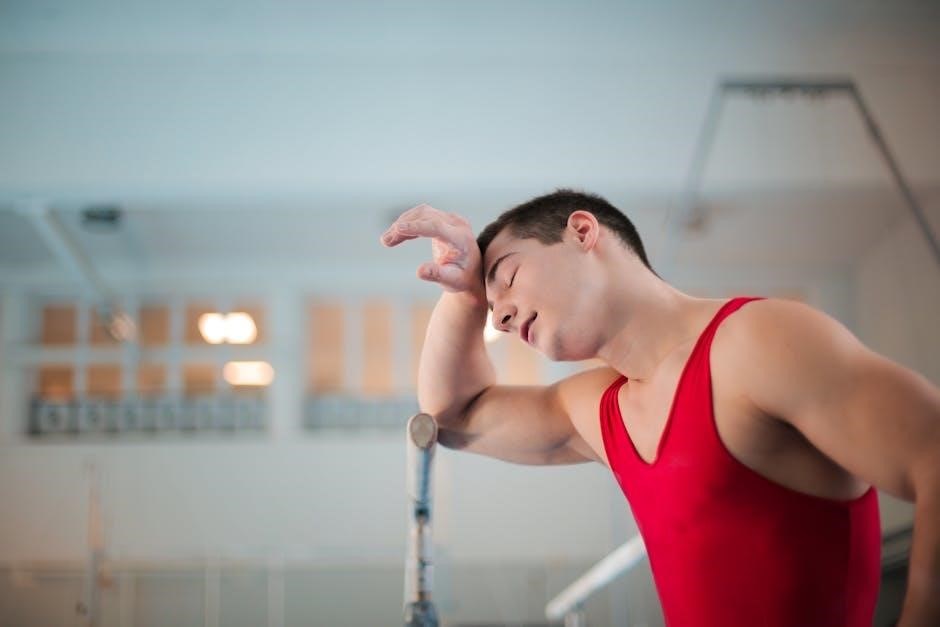
Strengthening Exercises for Iliopsoas Tendonitis
Strengthening exercises, such as mini-squats, step-ups, and hamstring curls, are essential for rebuilding muscle endurance and supporting the hip joint. Use light weights and high repetitions.
10.1 Mini-Squats and Step-Ups
Mini-squats and step-ups are effective for strengthening the iliopsoas and surrounding muscles. Mini-squats target the quadriceps and hip flexors, promoting stability. Step-ups enhance strength, balance, and coordination. Both exercises should be performed with controlled movements, avoiding explosive actions. Start with low steps and gradually increase height as strength improves. Proper form is crucial to prevent strain. These exercises are ideal for early to intermediate phases of rehabilitation, helping restore functional mobility and reducing the risk of recurrence;
10.2 Leg Press and Hamstring Curls
Leg press and hamstring curls are excellent for strengthening the posterior chain and hip flexors. The leg press targets quadriceps and glutes, while hamstring curls focus on the hamstrings, creating muscle balance; Using light weights with high repetitions helps improve endurance without overloading the iliopsoas tendon. These exercises are particularly beneficial in the intermediate phase of rehabilitation, promoting functional strength and mobility. Perform them with controlled movements to avoid strain, ensuring proper form throughout the exercise range.
10.3 Superman Exercises on a Physioball
Superman exercises on a physioball target the lower back and hip extensors, enhancing core stability and strength. Lie prone on the ball, extending arms and legs. Slowly lift arms, shoulders, and legs, holding briefly before lowering. This exercise improves posture and reduces strain on the iliopsoas tendon. Perform 3 sets of 12 repetitions, focusing on controlled movements. Incorporate this exercise in advanced phases to promote dynamic stability and prepare for sport-specific activities, ensuring gradual progression and avoiding explosive motions to prevent reinjury.

Return to Activity and Sport
Return to activity requires a gradual progression, focusing on core and hip strength. Sport-specific drills and dynamic balance exercises are introduced to ensure readiness. Full return to sports typically occurs around 6 months post-surgery, emphasizing injury prevention and avoiding repetitive hip flexor strain.
11.1 Gradual Progression to Full Activity
Gradual progression to full activity is essential to prevent relapse. Typically, full return to sports occurs around 6 months post-surgery. Focus on core strengthening, hip flexor stability, and dynamic balance exercises. Incorporate sport-specific drills to rebuild functional strength and agility. Avoid explosive movements and repetitive hip flexion that may aggravate the tendon. A structured exercise program ensures a safe transition to full activity, minimizing the risk of re-injury and promoting long-term recovery.
11.2 Avoiding Hip Flexor Tendonitis
Avoiding hip flexor tendonitis requires a combination of preventive measures and mindful exercise practices. Proper warm-up and cool-down routines are crucial to maintain muscle flexibility and strength. Incorporate stretching exercises for the hip flexors, hamstrings, and quads to ensure balanced muscle development. Strengthening the core and glutes helps reduce strain on the hip flexors. Avoid repetitive or explosive movements, especially during sports or high-impact activities. Consistent adherence to a well-structured exercise program can significantly reduce the risk of developing hip flexor tendonitis and promote long-term joint health.

Preventive Measures
Preventive measures include proper warm-up routines, regular stretching, and strengthening exercises. Maintaining muscle balance and avoiding overexertion can reduce the risk of iliopsoas tendonitis. Incorporate core exercises and ensure proper technique during workouts to promote hip health and prevent injury.
12.1 Proper Warm-Up and Cool-Down Routines
A proper warm-up prepares the muscles for activity, reducing injury risk. Start with light cardio like jogging or cycling, followed by dynamic stretches for the hip flexors and lower body. Incorporate leg swings, lunges, and gentle twists to enhance flexibility and blood flow. Post-exercise, a cool-down with static stretches for the iliopsoas, hamstrings, and quadriceps helps maintain muscle balance and prevents tightness. Consistent warm-up and cool-down routines are essential for long-term hip health and injury prevention.
12.2 Maintaining Muscle Balance
Maintaining muscle balance is crucial for preventing iliopsoas tendonitis. Strengthen the glutes and core muscles to counteract tight hip flexors. Incorporate exercises like glute bridges, side-lying leg lifts, and planks to enhance posterior chain strength. Additionally, stretch the hip flexors and quadriceps regularly to improve flexibility. Ensuring balanced muscle development reduces the risk of overuse injuries and promotes optimal hip function. A well-rounded exercise program addressing both strength and flexibility helps maintain muscle harmony and supports long-term recovery and prevention.
Common Mistakes to Avoid
Common mistakes include overexertion, explosive movements, and ignoring pain during exercises. Avoiding these errors ensures proper healing and prevents worsening of iliopsoas tendonitis. Stop exercises if pain occurs.
13.1 Overexertion and Explosive Movements
Overexertion and explosive movements are common mistakes during rehabilitation. These actions can strain the iliopsoas tendon, worsening inflammation and delaying recovery. Avoid high-impact exercises or sudden bursts of motion, as they may exacerbate the condition. Instead, focus on smooth, controlled movements and gradual progression. Repetitions should be slow and deliberate, emphasizing technique over intensity. Ignoring this advice can lead to prolonged pain and setbacks in the healing process. Always prioritize gentle, low-impact exercises to protect the tendon during recovery.
13.2 Ignoring Pain During Exercises
Ignoring pain during exercises can hinder recovery and worsen iliopsoas tendonitis. Pain is a signal to stop or modify movements. Continuing exercises through pain may cause further inflammation or damage. Always listen to your body and adjust routines accordingly. If pain persists, consult a healthcare professional to reassess your program. Prioritizing pain-free exercises ensures a safer and more effective recovery process. This approach helps prevent setbacks and promotes long-term healing of the iliopsoas tendon.
When to See a Doctor
Consult a doctor if experiencing severe pain, inability to perform daily activities, or worsening symptoms despite rest and exercises. Professional guidance is crucial for proper diagnosis and treatment.
14.1 Signs of Worsening Condition
Signs of a worsening condition include increased pain, swelling, or limited hip mobility. If pain persists despite rest and exercises, or if it radiates to other areas, seek medical help. Sharp pains during movement or inability to bear weight are red flags. Ignoring these signs may lead to prolonged recovery or more severe damage, emphasizing the need for timely professional evaluation and treatment to prevent complications.
14.2 Importance of Professional Guidance
Professional guidance is crucial for effectively managing iliopsoas tendonitis. A healthcare provider or physical therapist can tailor exercises to individual needs, ensuring safe progression and avoiding exacerbation. They assess severity, adjust rehabilitation plans, and provide feedback on technique. Proper supervision helps prevent overexertion and addresses underlying imbalances. Consulting a specialist ensures a comprehensive approach, combining exercises with possible therapies for optimal recovery and reducing recurrence risk. Professional advice is key to achieving long-term relief and restoring functional mobility.
Iliopsoas tendonitis management focuses on targeted exercises, professional guidance, and gradual recovery. Consistent practice of stretching and strengthening routines restores function and prevents recurrence, ensuring long-term relief and mobility.
15.1 Summary of Key Points
15.2 Encouragement for Long-Term Recovery
Recovering from iliopsoas tendonitis requires patience, consistency, and a positive mindset. Celebrate small victories, like increased flexibility or reduced pain, as these milestones signify progress. Remember, healing is a journey, and every gentle stretch or strengthening exercise brings you closer to full recovery. Stay committed to your exercise program, and trust the process. With time and dedication, you’ll regain strength, mobility, and confidence, ultimately returning to your active lifestyle stronger and more resilient than before.

